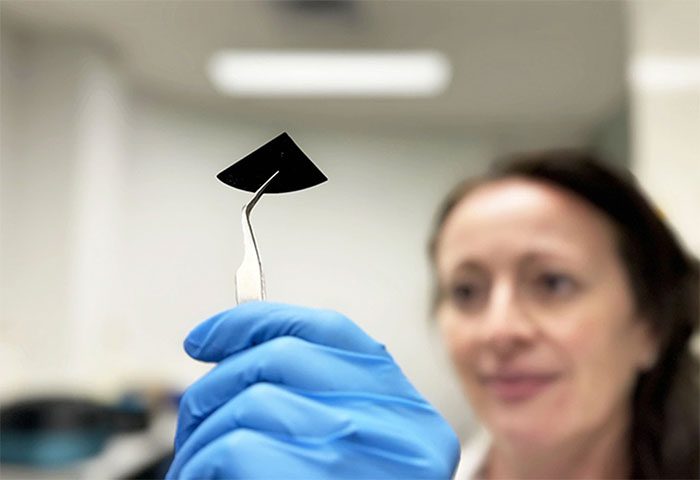Materials can be integrated into devices and surfaces to prevent the spread of viruses and reduce the use of disinfectants.
A research team from the Royal Melbourne Institute of Technology (RMIT) in Australia has successfully developed a silicon material made from nano spikes. This material is capable of eliminating 96% of viruses that come into contact with its surface.

An image magnified 65,000 times shows a virus adhering to a nano spike material. (Photo: RMIT).
According to the research team, the nano spikes literally puncture the virus particles upon contact. This action disrupts the structure of the viruses or damages them to the point where they can no longer reproduce.
As a result, nearly all viral activity on the surface is eliminated after about 6 hours.
The virus-killing properties of this material have been tested both practically and theoretically, successfully blocking four different types of human parainfluenza viruses. These viruses are responsible for illnesses such as bronchitis, pneumonia, and laryngitis. This is the most harmful parainfluenza virus in humans.
The research team stated that a 96% kill rate is sufficient to protect most healthy individuals from a range of pathogens that can be transmitted through surface contact.
Therefore, the most practical application of this material is in hospitals, scientific laboratories, or any place where surfaces need to be sterilized to the highest degree.
“The material can be integrated into devices and surfaces to prevent the spread of viruses and reduce the use of disinfectants,” said Natalie Borg, a molecular biologist involved in the project.

A virus-removing material visible to the naked eye. (Photo: RMIT).
The research team’s representative also mentioned that this approach is inspired by nature, specifically by certain insects such as dragonflies and cicadas…
These species possess numerous nano-sized spikes on their wings that can kill bacteria and fungi. However, since viruses are much smaller, the created spikes must also correspond in size.
The researchers noted that although this “immune armor” is still in the experimental phase, if it can be scaled up and applied in healthcare settings, it could make a significant difference.
“Implementing this advanced technology in high-risk environments such as laboratories, hospitals, healthcare facilities… or places where there is concern about exposure to hazardous biological materials can significantly enhance measures to prevent infectious diseases,” said applied physicist Samson Mah from RMIT.


















































